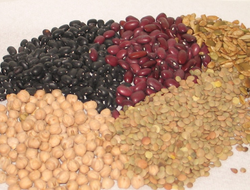Molybdenum: another essential trace mineral
Published: December 28, 2018
Molybdenum is possibly one of the lesser known, or least commonly discussed, essential trace minerals.
As a metal molybdenum has a variety of industrial applications, and from a biological perspective molybdenum is an essential co-factor in many enzymes found in animals (including humans) and bacteria.
In biological systems, molybdenum is bound primarily to sulfur or oxygen as well as to various molecules.
In humans molybdenum, in the form of molybdopterin, is a co-factor in several metalloenzymes.
Although you only need minute amounts of molybdenum, approximately 0.1 parts per million parts of body tissue, molybdenum as part of metalloenzymes is metabolically important.
Absence of molybdenum in your diet would have adverse effects on your metabolism with serious consequences for your health.
Fortunately, molybdenum deficiency is rare although it can occur under certain conditions such as undergoing long term total parenteral nutrition (TPN).
In general, molybdenum intake for most people falls well within the acceptable range.
Recommended daily allowance for molybdenum
The recommended daily allowance (RDA) reflects the average daily amount of molybdenum considered adequate to meet the needs of most healthy people.
The RDA is based on a 75% absorption rate and for adults this sets average requirement at 34 mcg/day which has been adjusted to 45 mcg/day or 130you’re your base requirement.
The RDA for various age groups is as follows:..link to the full article to learn more.
References
1.
Gropper, S.S., Smith, J.L. & Groff, J.L. (2005). Advanced Nutrition and Human Metabolism (4thEd.). Belmont, CA: Thomson Wadsworth.
2.
Whitney, E. & Rady Rolfes, S. (2005). Understanding Nutrition. Belmont, CA: Thomson Wadsworth
4.

